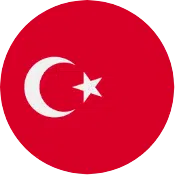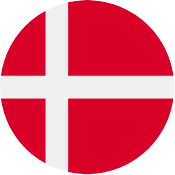Turkish Language Facts
If you’re thinking about learning Turkish it’s always good to know a little about the origins and history of the language you are learning. Here, Cactus Language offers up our most interesting Turkish language facts:

5 Interesting Turkish Language Facts
1. The Turkish language is part of the Turkic languages
The Turkish language was first spoken in Mongolia, before being strongly influenced by Arabic and Persian. Turkish was then reformed in the 20th century.
2. Turkish has around 75 million native speakers
The Turkish speakers are mainly in Turkey and the surrounding countries. Thanks to a large Turkish diaspora, Turkish is spoken in more than 30 countries where it is not an official language, including Germany with two million Turkish speakers.
3. Before 1928, Turkish was written using a specific form of Arabic writing
In order to modernise Turkey, the administration adopted an adapted form of the Latin alphabet in the 20th century to replace the Arabic writing.
4. Some Turkish words made it to the English Language
Examples include divan, kayak, kebab, kiosk, pilaf and yogurt.
5. The Turkish language has some tongue twisters
Tongue twisters are present in most languages and Turkish is no exception. For example: Bir berber bir berbere gel berber beraber Berberistan’da bir berber dükkanı açalım demiş. – A barber told another barber “come barber, let’s start up a joint barbershop in Barberistan”.
How to book with Cactus
Select language
Simply select which language you would like to learn and from the box below and click lets go.
Take level test
This is a quick test to help you find the right course for your current level of knowledge.
Book your course
Use our simple online booking system to select your course.
Frequently asked questions
What will I learn?
Our Course Outlines give an overview of the content and learning framework of Cactus courses. Includes themes, grammar and vocabulary you can typically expect to cover. These are intended as a guide only. Language teachers may at times adapt the course content to suit the specific level, aims and interests of the class.
How do I know what level I am?
Are you unsure where to start or progress to? Then take our level test and read our level descriptions for guidance.
Do I receive a qualification or certificate?
At the end of your course you receive a certificate of participation. You will be able to be download it from your MyCactus account. This confirms the language and level of course you have taken. Our course levels are based on two internationally recognised systems. You will have a universally accepted reference for your studies. (Important: Please note that you must complete the end of course questionnaire sent to you to be able to get your certificate! You will receive the course questionnaire by e-mail at the end of your course.)
Do I need a course book?
You will need a course book to attend your course. Course books are not included in the course fees. We recommend that you buy your own course book separately before your course starts. We will let you know which course book you will require and advise where you can purchase this. Please note that a course book often covers more than one level. So if you progress to the next course, you may not necessarily need to buy a new book. Again, we will advise you of this at the time. The course book is chosen by our teachers and academic team. This is based on which book is most suitable for the level of the class whilst offering the most communicative approach.
Still have questions?
Sign up for our offers
Exclusive discounts on your course with Cactus directly on your inbox!


 Turkish
Turkish French
French German
German Italian
Italian Spanish
Spanish Arabic
Arabic Cantonese
Cantonese Czech
Czech Croatian
Croatian Danish
Danish Dutch
Dutch English
English Greek
Greek Hebrew
Hebrew Hindi
Hindi Japanese
Japanese Korean
Korean Norwegian
Norwegian Polish
Polish Portuguese
Portuguese Russian
Russian Swedish
Swedish Thai
Thai Ukrainian
Ukrainian